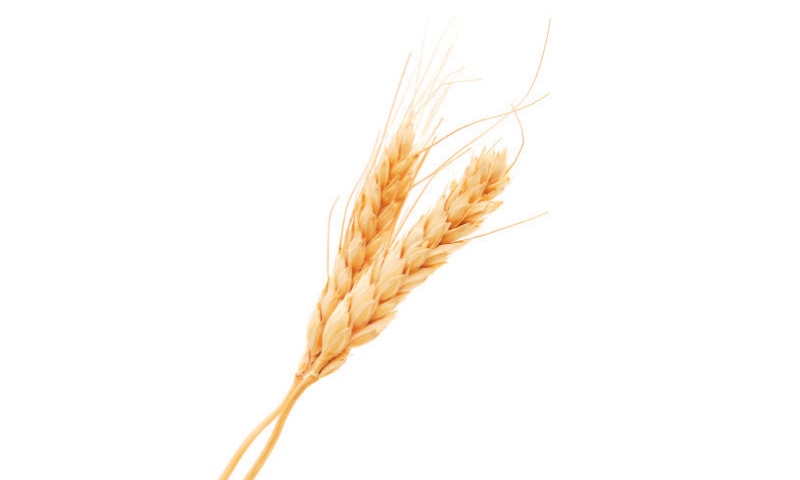Following Sindh, Punjab started wheat procurement on April 1 amid many uncertainties. Some of them stem from the lingering legacy of the last season while others are generated by policy confusions.
The government deepens confusion every year and the governance failure let a problem assume crisis proportions. Flour pricing would be a huge challenge even if wheat procurement and disbursement is somehow being managed. Collectively these issues haunt the wheat season this year and it can incur high political cost for the government.
Dealing with last year’s hangover may turn out to be the biggest challenge this season. Last year, the official price of wheat was Rs1,400 per maund. However, it started spiralling as soon as the procurement drive ended and never stopped: staring from Rs1,400 in April, it raced to Rs2,300 per maund (in some parts of the country it was even higher) four months down the line — bringing a whopping profit of Rs900 per maund to those who held it for four or five months.
Will the increase in the base wheat price from Rs1,400 to Rs1,800 de-incentivise greed or work the other way round?
This year, the government, hoping to dampen the profit greed of stockists and hoarders, has increased the base price from Rs1,400 to Rs1,800 per maund — a jump of 28.57 per cent. As an additional step, it also ordered three million tonnes of duty-free import and exempted the Trading Corporation of Pakistan’s wheat import from the Public Procurement Regulatory Authority (PPRA) rules.
However, the basic question stays, and will be tested in the next few months — does an increase in the basic price of a commodity de-incentivise greed? Or does it works the other way round?
Last year’s exceptional profit must have strengthened the hold and resolve of hoarders and profiteers and they will be out to their last rupee to purchase wheat and hoard it. How does the government plan to deal with them? Experience says that administrative measures, the last resort of any government, is an unending exercise; they not only distort the market but also become self-feeding and create chaos rather than clearing it.
Last year’s turmoil in the wheat and flour market would thus only accentuate trouble by multiplying actors in the market. Given the quantum of money that hoarders made, the government can rest be sure it will be dealing with such characters in greater numbers — even farmers may be one of them. If they join the spree, the government would have a disastrous situation at hand.
Noor Ahmad, a farmer from Lahore conurbations, articulates farmers sentiments: “We experienced extreme financial frustration when we saw the commodity, which we had sold for Rs1,400 per maund a few months ago, selling at Rs2,300 at a profit margin of 64.28pc. Should we be as eager to sell the commodity as we were last year? Or does the delay of few months make fiscal logic? Or does not hoarding or holding make better business sense?”
With the benefit of hindsight, one can claim that the cardinal sin in last year’s exercise was stopping the millers from procuring and building their own stocks. As soon as procurement ended, without wheat, they were in the market for daily requirements, creating a massive demand of 15,000 to 20,000 tonnes a day that started the spiral. This year, Punjab seems to be doing exactly the same. Its procurement policy for the season says: “millers would be allowed to purchase a specific quantity and keep in a godown declared in their licenses,” leaving the word “specific” undefined. The millers may define it to their benefit and government officials to their wishes and trigger an administrative war similar to last year that caused great damage to market sentiments.
If the current scenario leads to troubles for the procurement drive and supply, it will affect the price. An increase in over 28pc of the price would, sooner or later, translate into a higher price of flour. One hopes that government has plans to deal with it.
However, it has not shared any plans to deal with it but has (from top to bottom) expressed its resolve to keep the price at last year’s level. It has only one way of doing it, which is increasing subsidy correspondingly and supply wheat to millers at the rate of last year. Can it foot the bill that will certainly run into hundreds of billions of rupees? Certainly not! Neither the federation nor provincial governments have shared any schemes to cap the price at the rate of Rs860 (per 10Kg bag in Punjab).
The millers, on their part, warn that the country should prepare for the price shooting up anywhere between Rs1,050 to Rs1,100 for a 10kg — a price hit during the peak of last year’s spike. “This price is going to be the new normal this year, if not more,” says Majid Abdullah — a flour miller from Lahore.
Another caveat is added to the situation by Sindh, which has increased the procurement price to an even higher Rs2,000 per maund — an increase of 42.85pc. For the first time in the country’s history, Pakistan would have two procurement prices. This difference is going to distort the market further, both at procurement and later at the release level.
Sindh usually feeds Punjab in March and the first part of April followed by South Punjab. This time, neither Sindh farmers would send crop to Punjab for the first six weeks nor would South Punjab send it up the country as they would have a better chance in Sindh. Punjab may end up resorting to administrative measures to block wheat draining to Sindh, creating provincial fissures. How the federation plans to deal with the situation that only time will tell.
Published in Dawn, The Business and Finance Weekly, April 5th, 2021














































Dear visitor, the comments section is undergoing an overhaul and will return soon.